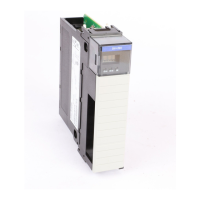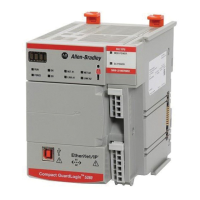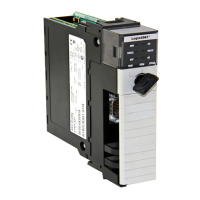1756-6.5.3 - December 1999
1-6 ControlNet Communication Basics
Control of Scheduled I/O Communications
Scheduled connections allow you to send and to receive data repeatedly at a
predetermined rate. You can use the 1756-CNB module to control
scheduled I/O when you use it in conjunction with a Logix5550 controller.
When you place the module in the I/O configuration list of a Logix5550
controller and attach a second ControlLogix chassis to the same ControlNet
network, you can perform remote control operations on the I/O in the
second chassis.
In this situation, the 1756-CNB module in the local chassis with the
Logix5550 controller acts as a scanner while the 1756-CNB module in the
remote chassis with the I/O plays the role of an adapter.
Using RSNetWorx for ControlNet Software
You must use RSNetWorx for ControlNet to enable any connection in a
remote chassis. In addition, RSNetWorx transfers configuration data to the
remote modules and establishes a network update time (NUT) that is
compliant with the desired communications options specified for each
module during configuration.
Important:RSNetWorx must be run whenever a scheduled connection is
added to, removed from, or changed in your system.
Understanding the Control and
Information Protocol
ControlLogix routing uses the Control and Information Protocol (CIP). CIP
is a message-based protocol that implements a relative path to send a message
from the producing device in a system to the consuming devices. In this way,
the producing device in a networked system contains the path information
that steers the message along the proper route to reach its consumers. Since
the producing device holds this information, other devices along the path
simply pass this information; they do not need to store it. This has two
significant benefits:
• You do not need to configure routing tables in the bridging module,
which greatly simplifies maintenance and module replacement.
• You maintain full control over the route taken by each message, which
enables you to select alternative paths for the same end device.
See Appendices A and B for more information on connections and on
produced and consumed tags.
I/O
I/O
C
N
B
L
5
5
5
0
C
N
B
Scanner
Adaptor
ControlNet Network
You can learn more about RSNetWorx for ControlNet and other Rockwell
Software products by visiting the Rockwell Software internet site,
http://www.software.rockwell.com
.

